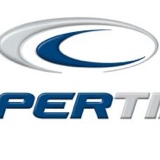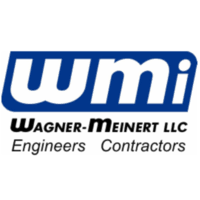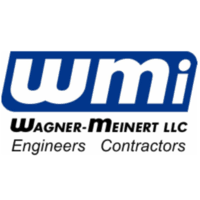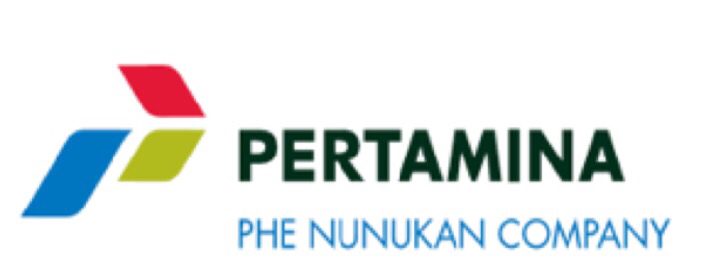Information
Cooper Tupelo Safety Audit
-
Audit Title
-
Report No.
-
CONDUCTED ON:
-
THIS REPORT PREPARED BY:
Tim White, MS, NREMT-P
662.549.1798 cell
Extension: 3102 -
PERSONNEL
- Robert Haggerty
- Cuabeya Woods
- Terry Weeden
- Bill Cassilly
- George Dutcher
- Cole Goodson
- Monica Hauss
- Bob Marshall
- Ken Midkiff
- Gary Morgan
- Gary Stanford
- Paul Park
- Stacy Stepp
- John Swartzendruber
- Brian Weibel
Audit Area 1
-
Location
ELECTRICAL
-
Electrical panel has at least 3' of clearance.<br>29CFR 1910.303(g)
-
Electrical panels are "dead front" with no openings that would expose employees to electrical hazard. <br>29CFR 1910.305(d)(2)
-
Disconnecting means are clearly marked as to their purpose and function. <br>29CFR 1910.303(f)(1)
-
Flexible cord used as a substitute for fixed wiring. <br>29CFR 1910.305(g)(1)(iv)[A]
-
Flexible cord run through holes in walls, ceilings, floors, doorways, windows or other similar openings. <br>29CFR 1910.305(g)(1)(iv)[B] & [C]
-
Flexible cord attached to building surfaces. <br>29CFR 1910.305(g)(1)(iv)[D]
-
Flexible cord concealed behind walls, ceilings or floors.<br>29CFR 1910.305(g)(1)(iv)[E]
-
Other electrical issues
MACHINE GUARDING / LOCKOUT - TAGOUT
-
Machine Guarding Issues<br>29CFR 1910.212
-
Lock out Tag out procedure observed<br>29CFR 1910.147
FIRE PREVENTION
-
Fire suppression equipment available and unobstructed<br>29CFR 1910.37(a)(3)
-
Trash or other flammable or combustible materials that could cause or support a fire.
WALKING WORKING SURFACES
-
Walkways and aisle ways clear and unobstructed<br>29CFR 1910.37(a)(3)
-
Exits clear and unobstructed <br>29CFR 1910.37(a)(3)
PERSONAL PROTECTIVE EQUIPMENT / PERSONAL EMPLOYEE SAFETY
-
Employees wearing hearing protection. <br>29CFR 1910.95 (I)(2)(I) & (I)
-
Employees wearing safety shoes. <br>29CFR 1910.136 (a)
-
Compressed air used to clean debris from employee's body / clothing<br>29CFR 1917.154 incorporated as "good business practice" for all industries OSHA L.O.I 01/14/1994
MATERIAL HANDLING
-
Damaged, worn or defective slings<br>29CFR 1910.184(c)(1)
-
Sling has a legible weight capacity tag<br>29CFR 1910.184(c)(4)
-
Hoist hook has a hook latch that is in proper working order<br>General Duty Clause Section 5(a)(1)<br>OSHA Letter of interpretation 01/10/2006 requirement for safety latch on sling hook.
-
Hoist hook condition: no deformity, cracking or other damage that would effect safe use. <br>29CFR 1910.179(j)(2)(II)
MOBILE EQUIPMENT
-
Forklift operator wearing seatbelt.
-
Mobile equipment driver operates at a safe speed. <br>29CFR 1910.178(n)(8)
-
Mobile equipment operator slows and sounds horn at intersections and when approaching pedestrians. <br>29CFR 1910.178(n)(4)
MISCELLANEOUS SAFETY ISSUES
-
Other Safety Findings
-
SKETCH OF SAFETY CONCERN
OVERALL AREA SCORE
-
1 - NEEDS ATTENTION
-
2
-
3 - GOOD (could use improvement but meets basic 6s and general safety requirements)
-
4
-
5 - OUTSTANDING (exceeds the scope and intent of 6s and holds safety as a fundamental value)
Audit Area 2
-
Location
ELECTRICAL
-
Electrical panel has at least 3' of clearance.<br>29CFR 1910.303(g)
-
Electrical panels are "dead front" with no openings that would expose employees to electrical hazard. <br>29CFR 1910.305(d)(2)
-
Disconnecting means are clearly marked as to their purpose and function. <br>29CFR 1910.303(f)(1)
-
Flexible cord used as a substitute for fixed wiring. <br>29CFR 1910.305(g)(1)(iv)[A]
-
Flexible cord run through holes in walls, ceilings, floors, doorways, windows or other similar openings. <br>29CFR 1910.305(g)(1)(iv)[B] & [C]
-
Flexible cord attached to building surfaces. <br>29CFR 1910.305(g)(1)(iv)[D]
-
Flexible cord concealed behind walls, ceilings or floors.<br>29CFR 1910.305(g)(1)(iv)[E]
-
Other electrical issues
MACHINE GUARDING / LOCKOUT - TAGOUT
-
Machine Guarding Issues<br>29CFR 1910.212
-
Lock out Tag out procedure observed<br>29CFR 1910.147
FIRE PREVENTION
-
Fire suppression equipment available and unobstructed<br>29CFR 1910.37(a)(3)
-
Trash or other flammable or combustible materials that could cause or support a fire.
WALKING WORKING SURFACES
-
Walkways and aisle ways clear and unobstructed<br>29CFR 1910.37(a)(3)
-
Exits clear and unobstructed <br>29CFR 1910.37(a)(3)
PERSONAL PROTECTIVE EQUIPMENT / PERSONAL EMPLOYEE SAFETY
-
Employees wearing hearing protection. <br>29CFR 1910.95 (I)(2)(I) & (I)
-
Employees wearing safety shoes. <br>29CFR 1910.136 (a)
-
Compressed air used to clean debris from employee's body / clothing<br>29CFR 1917.154 incorporated as "good business practice" for all industries OSHA L.O.I 01/14/1994
MATERIAL HANDLING
-
Damaged, worn or defective slings<br>29CFR 1910.184(c)(1)
-
Sling has a legible weight capacity tag<br>29CFR 1910.184(c)(4)
-
Hoist hook has a hook latch that is in proper working order<br>General Duty Clause Section 5(a)(1)<br>OSHA Letter of interpretation 01/10/2006 requirement for safety latch on sling hook.
-
Hoist hook condition: no deformity, cracking or other damage that would effect safe use. <br>29CFR 1910.179(j)(2)(II)
MOBILE EQUIPMENT
-
Forklift operator wearing seatbelt.
-
Mobile equipment driver operates at a safe speed. <br>29CFR 1910.178(n)(8)
-
Mobile equipment operator slows and sounds horn at intersections and when approaching pedestrians. <br>29CFR 1910.178(n)(4)
MISCELLANEOUS SAFETY ISSUES
-
Other Safety Findings
-
SKETCH OF SAFETY CONCERN
OVERALL AREA SCORE
-
1 - NEEDS ATTENTION
-
2
-
3 - GOOD (could use improvement but meets basic 6s and general safety requirements)
-
4
-
5 - OUTSTANDING (exceeds the scope and intent of 6s and holds safety as a fundamental value)
Audit Area 3
-
Location
ELECTRICAL
-
Electrical panel has at least 3' of clearance.<br>29CFR 1910.303(g)
-
Electrical panels are "dead front" with no openings that would expose employees to electrical hazard. <br>29CFR 1910.305(d)(2)
-
Disconnecting means are clearly marked as to their purpose and function. <br>29CFR 1910.303(f)(1)
-
Flexible cord used as a substitute for fixed wiring. <br>29CFR 1910.305(g)(1)(iv)[A]
-
Flexible cord run through holes in walls, ceilings, floors, doorways, windows or other similar openings. <br>29CFR 1910.305(g)(1)(iv)[B] & [C]
-
Flexible cord attached to building surfaces. <br>29CFR 1910.305(g)(1)(iv)[D]
-
Flexible cord concealed behind walls, ceilings or floors.<br>29CFR 1910.305(g)(1)(iv)[E]
-
Other electrical issues
MACHINE GUARDING / LOCKOUT - TAGOUT
-
Machine Guarding Issues<br>29CFR 1910.212
-
Lock out Tag out procedure observed<br>29CFR 1910.147
FIRE PREVENTION
-
Fire suppression equipment available and unobstructed<br>29CFR 1910.37(a)(3)
-
Trash or other flammable or combustible materials that could cause or support a fire.
WALKING WORKING SURFACES
-
Walkways and aisle ways clear and unobstructed<br>29CFR 1910.37(a)(3)
-
Exits clear and unobstructed <br>29CFR 1910.37(a)(3)
PERSONAL PROTECTIVE EQUIPMENT / PERSONAL EMPLOYEE SAFETY
-
Employees wearing hearing protection. <br>29CFR 1910.95 (I)(2)(I) & (I)
-
Employees wearing safety shoes. <br>29CFR 1910.136 (a)
-
Compressed air used to clean debris from employee's body / clothing<br>29CFR 1917.154 incorporated as "good business practice" for all industries OSHA L.O.I 01/14/1994
MATERIAL HANDLING
-
Damaged, worn or defective slings<br>29CFR 1910.184(c)(1)
-
Sling has a legible weight capacity tag<br>29CFR 1910.184(c)(4)
-
Hoist hook has a hook latch that is in proper working order<br>General Duty Clause Section 5(a)(1)<br>OSHA Letter of interpretation 01/10/2006 requirement for safety latch on sling hook.
-
Hoist hook condition: no deformity, cracking or other damage that would effect safe use. <br>29CFR 1910.179(j)(2)(II)
MOBILE EQUIPMENT
-
Forklift operator wearing seatbelt.
-
Mobile equipment driver operates at a safe speed. <br>29CFR 1910.178(n)(8)
-
Mobile equipment operator slows and sounds horn at intersections and when approaching pedestrians. <br>29CFR 1910.178(n)(4)
MISCELLANEOUS SAFETY ISSUES
-
Other Safety Findings
-
SKETCH OF SAFETY CONCERN
OVERALL AREA SCORE
-
1 - NEEDS ATTENTION
-
2
-
3 - GOOD (could use improvement but meets basic 6s and general safety requirements)
-
4
-
5 - OUTSTANDING (exceeds the scope and intent of 6s and holds safety as a fundamental value)
Audit Area 4
-
Location
ELECTRICAL
-
Electrical panel has at least 3' of clearance.<br>29CFR 1910.303(g)
-
Electrical panels are "dead front" with no openings that would expose employees to electrical hazard. <br>29CFR 1910.305(d)(2)
-
Disconnecting means are clearly marked as to their purpose and function. <br>29CFR 1910.303(f)(1)
-
Flexible cord used as a substitute for fixed wiring. <br>29CFR 1910.305(g)(1)(iv)[A]
-
Flexible cord run through holes in walls, ceilings, floors, doorways, windows or other similar openings. <br>29CFR 1910.305(g)(1)(iv)[B] & [C]
-
Flexible cord attached to building surfaces. <br>29CFR 1910.305(g)(1)(iv)[D]
-
Flexible cord concealed behind walls, ceilings or floors.<br>29CFR 1910.305(g)(1)(iv)[E]
-
Other electrical issues
MACHINE GUARDING / LOCKOUT - TAGOUT
-
Machine Guarding Issues<br>29CFR 1910.212
-
Lock out Tag out procedure observed<br>29CFR 1910.147
FIRE PREVENTION
-
Fire suppression equipment available and unobstructed<br>29CFR 1910.37(a)(3)
-
Trash or other flammable or combustible materials that could cause or support a fire.
WALKING WORKING SURFACES
-
Walkways and aisle ways clear and unobstructed<br>29CFR 1910.37(a)(3)
-
Exits clear and unobstructed <br>29CFR 1910.37(a)(3)
PERSONAL PROTECTIVE EQUIPMENT / PERSONAL EMPLOYEE SAFETY
-
Employees wearing hearing protection. <br>29CFR 1910.95 (I)(2)(I) & (I)
-
Employees wearing safety shoes. <br>29CFR 1910.136 (a)
-
Compressed air used to clean debris from employee's body / clothing<br>29CFR 1917.154 incorporated as "good business practice" for all industries OSHA L.O.I 01/14/1994
MATERIAL HANDLING
-
Damaged, worn or defective slings<br>29CFR 1910.184(c)(1)
-
Sling has a legible weight capacity tag<br>29CFR 1910.184(c)(4)
-
Hoist hook has a hook latch that is in proper working order<br>General Duty Clause Section 5(a)(1)<br>OSHA Letter of interpretation 01/10/2006 requirement for safety latch on sling hook.
-
Hoist hook condition: no deformity, cracking or other damage that would effect safe use. <br>29CFR 1910.179(j)(2)(II)
MOBILE EQUIPMENT
-
Forklift operator wearing seatbelt.
-
Mobile equipment driver operates at a safe speed. <br>29CFR 1910.178(n)(8)
-
Mobile equipment operator slows and sounds horn at intersections and when approaching pedestrians. <br>29CFR 1910.178(n)(4)
MISCELLANEOUS SAFETY ISSUES
-
Other Safety Findings
-
SKETCH OF SAFETY CONCERN
OVERALL AREA SCORE
-
1 - NEEDS ATTENTION
-
2
-
3 - GOOD (could use improvement but meets basic 6s and general safety requirements)
-
4
-
5 - OUTSTANDING (exceeds the scope and intent of 6s and holds safety as a fundamental value)
Audit Area 5
-
Location
ELECTRICAL
-
Electrical panel has at least 3' of clearance.<br>29CFR 1910.303(g)
-
Electrical panels are "dead front" with no openings that would expose employees to electrical hazard. <br>29CFR 1910.305(d)(2)
-
Disconnecting means are clearly marked as to their purpose and function. <br>29CFR 1910.303(f)(1)
-
Flexible cord used as a substitute for fixed wiring. <br>29CFR 1910.305(g)(1)(iv)[A]
-
Flexible cord run through holes in walls, ceilings, floors, doorways, windows or other similar openings. <br>29CFR 1910.305(g)(1)(iv)[B] & [C]
-
Flexible cord attached to building surfaces. <br>29CFR 1910.305(g)(1)(iv)[D]
-
Flexible cord concealed behind walls, ceilings or floors.<br>29CFR 1910.305(g)(1)(iv)[E]
-
Other electrical issues
MACHINE GUARDING / LOCKOUT - TAGOUT
-
Machine Guarding Issues<br>29CFR 1910.212
-
Lock out Tag out procedure observed<br>29CFR 1910.147
FIRE PREVENTION
-
Fire suppression equipment available and unobstructed<br>29CFR 1910.37(a)(3)
-
Trash or other flammable or combustible materials that could cause or support a fire.
WALKING WORKING SURFACES
-
Walkways and aisle ways clear and unobstructed<br>29CFR 1910.37(a)(3)
-
Exits clear and unobstructed <br>29CFR 1910.37(a)(3)
PERSONAL PROTECTIVE EQUIPMENT / PERSONAL EMPLOYEE SAFETY
-
Employees wearing hearing protection. <br>29CFR 1910.95 (I)(2)(I) & (I)
-
Employees wearing safety shoes. <br>29CFR 1910.136 (a)
-
Compressed air used to clean debris from employee's body / clothing<br>29CFR 1917.154 incorporated as "good business practice" for all industries OSHA L.O.I 01/14/1994
MATERIAL HANDLING
-
Damaged, worn or defective slings<br>29CFR 1910.184(c)(1)
-
Sling has a legible weight capacity tag<br>29CFR 1910.184(c)(4)
-
Hoist hook has a hook latch that is in proper working order<br>General Duty Clause Section 5(a)(1)<br>OSHA Letter of interpretation 01/10/2006 requirement for safety latch on sling hook.
-
Hoist hook condition: no deformity, cracking or other damage that would effect safe use. <br>29CFR 1910.179(j)(2)(II)
MOBILE EQUIPMENT
-
Forklift operator wearing seatbelt.
-
Mobile equipment driver operates at a safe speed. <br>29CFR 1910.178(n)(8)
-
Mobile equipment operator slows and sounds horn at intersections and when approaching pedestrians. <br>29CFR 1910.178(n)(4)
MISCELLANEOUS SAFETY ISSUES
-
Other Safety Findings
-
SKETCH OF SAFETY CONCERN
OVERALL AREA SCORE
-
1 - NEEDS ATTENTION
-
2
-
3 - GOOD (could use improvement but meets basic 6s and general safety requirements)
-
4
-
5 - OUTSTANDING (exceeds the scope and intent of 6s and holds safety as a fundamental value)
Audit Area 6
-
Location
ELECTRICAL
-
Electrical panel has at least 3' of clearance.<br>29CFR 1910.303(g)
-
Electrical panels are "dead front" with no openings that would expose employees to electrical hazard. <br>29CFR 1910.305(d)(2)
-
Disconnecting means are clearly marked as to their purpose and function. <br>29CFR 1910.303(f)(1)
-
Flexible cord used as a substitute for fixed wiring. <br>29CFR 1910.305(g)(1)(iv)[A]
-
Flexible cord run through holes in walls, ceilings, floors, doorways, windows or other similar openings. <br>29CFR 1910.305(g)(1)(iv)[B] & [C]
-
Flexible cord attached to building surfaces. <br>29CFR 1910.305(g)(1)(iv)[D]
-
Flexible cord concealed behind walls, ceilings or floors.<br>29CFR 1910.305(g)(1)(iv)[E]
-
Other electrical issues
MACHINE GUARDING / LOCKOUT - TAGOUT
-
Machine Guarding Issues<br>29CFR 1910.212
-
Lock out Tag out procedure observed<br>29CFR 1910.147
FIRE PREVENTION
-
Fire suppression equipment available and unobstructed<br>29CFR 1910.37(a)(3)
-
Trash or other flammable or combustible materials that could cause or support a fire.
WALKING WORKING SURFACES
-
Walkways and aisle ways clear and unobstructed<br>29CFR 1910.37(a)(3)
-
Exits clear and unobstructed <br>29CFR 1910.37(a)(3)
PERSONAL PROTECTIVE EQUIPMENT / PERSONAL EMPLOYEE SAFETY
-
Employees wearing hearing protection. <br>29CFR 1910.95 (I)(2)(I) & (I)
-
Employees wearing safety shoes. <br>29CFR 1910.136 (a)
-
Compressed air used to clean debris from employee's body / clothing<br>29CFR 1917.154 incorporated as "good business practice" for all industries OSHA L.O.I 01/14/1994
MATERIAL HANDLING
-
Damaged, worn or defective slings<br>29CFR 1910.184(c)(1)
-
Sling has a legible weight capacity tag<br>29CFR 1910.184(c)(4)
-
Hoist hook has a hook latch that is in proper working order<br>General Duty Clause Section 5(a)(1)<br>OSHA Letter of interpretation 01/10/2006 requirement for safety latch on sling hook.
-
Hoist hook condition: no deformity, cracking or other damage that would effect safe use. <br>29CFR 1910.179(j)(2)(II)
MOBILE EQUIPMENT
-
Forklift operator wearing seatbelt.
-
Mobile equipment driver operates at a safe speed. <br>29CFR 1910.178(n)(8)
-
Mobile equipment operator slows and sounds horn at intersections and when approaching pedestrians. <br>29CFR 1910.178(n)(4)
MISCELLANEOUS SAFETY ISSUES
-
Other Safety Findings
-
SKETCH OF SAFETY CONCERN
OVERALL AREA SCORE
-
1 - NEEDS ATTENTION
-
2
-
3 - GOOD (could use improvement but meets basic 6s and general safety requirements)
-
4
-
5 - OUTSTANDING (exceeds the scope and intent of 6s and holds safety as a fundamental value)
Audit Area 7
-
Location
ELECTRICAL
-
Electrical panel has at least 3' of clearance.<br>29CFR 1910.303(g)
-
Electrical panels are "dead front" with no openings that would expose employees to electrical hazard. <br>29CFR 1910.305(d)(2)
-
Disconnecting means are clearly marked as to their purpose and function. <br>29CFR 1910.303(f)(1)
-
Flexible cord used as a substitute for fixed wiring. <br>29CFR 1910.305(g)(1)(iv)[A]
-
Flexible cord run through holes in walls, ceilings, floors, doorways, windows or other similar openings. <br>29CFR 1910.305(g)(1)(iv)[B] & [C]
-
Flexible cord attached to building surfaces. <br>29CFR 1910.305(g)(1)(iv)[D]
-
Flexible cord concealed behind walls, ceilings or floors.<br>29CFR 1910.305(g)(1)(iv)[E]
-
Other electrical issues
MACHINE GUARDING / LOCKOUT - TAGOUT
-
Machine Guarding Issues<br>29CFR 1910.212
-
Lock out Tag out procedure observed<br>29CFR 1910.147
FIRE PREVENTION
-
Fire suppression equipment available and unobstructed<br>29CFR 1910.37(a)(3)
-
Trash or other flammable or combustible materials that could cause or support a fire.
WALKING WORKING SURFACES
-
Walkways and aisle ways clear and unobstructed<br>29CFR 1910.37(a)(3)
-
Exits clear and unobstructed <br>29CFR 1910.37(a)(3)
PERSONAL PROTECTIVE EQUIPMENT / PERSONAL EMPLOYEE SAFETY
-
Employees wearing hearing protection. <br>29CFR 1910.95 (I)(2)(I) & (I)
-
Employees wearing safety shoes. <br>29CFR 1910.136 (a)
-
Compressed air used to clean debris from employee's body / clothing<br>29CFR 1917.154 incorporated as "good business practice" for all industries OSHA L.O.I 01/14/1994
MATERIAL HANDLING
-
Damaged, worn or defective slings<br>29CFR 1910.184(c)(1)
-
Sling has a legible weight capacity tag<br>29CFR 1910.184(c)(4)
-
Hoist hook has a hook latch that is in proper working order<br>General Duty Clause Section 5(a)(1)<br>OSHA Letter of interpretation 01/10/2006 requirement for safety latch on sling hook.
-
Hoist hook condition: no deformity, cracking or other damage that would effect safe use. <br>29CFR 1910.179(j)(2)(II)
MOBILE EQUIPMENT
-
Forklift operator wearing seatbelt.
-
Mobile equipment driver operates at a safe speed. <br>29CFR 1910.178(n)(8)
-
Mobile equipment operator slows and sounds horn at intersections and when approaching pedestrians. <br>29CFR 1910.178(n)(4)
MISCELLANEOUS SAFETY ISSUES
-
Other Safety Findings
-
SKETCH OF SAFETY CONCERN
OVERALL AREA SCORE
-
1 - NEEDS ATTENTION
-
2
-
3 - GOOD (could use improvement but meets basic 6s and general safety requirements)
-
4
-
5 - OUTSTANDING (exceeds the scope and intent of 6s and holds safety as a fundamental value)
Audit Area 8
-
Location
ELECTRICAL
-
Electrical panel has at least 3' of clearance.<br>29CFR 1910.303(g)
-
Electrical panels are "dead front" with no openings that would expose employees to electrical hazard. <br>29CFR 1910.305(d)(2)
-
Disconnecting means are clearly marked as to their purpose and function. <br>29CFR 1910.303(f)(1)
-
Flexible cord used as a substitute for fixed wiring. <br>29CFR 1910.305(g)(1)(iv)[A]
-
Flexible cord run through holes in walls, ceilings, floors, doorways, windows or other similar openings. <br>29CFR 1910.305(g)(1)(iv)[B] & [C]
-
Flexible cord attached to building surfaces. <br>29CFR 1910.305(g)(1)(iv)[D]
-
Flexible cord concealed behind walls, ceilings or floors.<br>29CFR 1910.305(g)(1)(iv)[E]
-
Other electrical issues
MACHINE GUARDING / LOCKOUT - TAGOUT
-
Machine Guarding Issues<br>29CFR 1910.212
-
Lock out Tag out procedure observed<br>29CFR 1910.147
FIRE PREVENTION
-
Fire suppression equipment available and unobstructed<br>29CFR 1910.37(a)(3)
-
Trash or other flammable or combustible materials that could cause or support a fire.
WALKING WORKING SURFACES
-
Walkways and aisle ways clear and unobstructed<br>29CFR 1910.37(a)(3)
-
Exits clear and unobstructed <br>29CFR 1910.37(a)(3)
PERSONAL PROTECTIVE EQUIPMENT / PERSONAL EMPLOYEE SAFETY
-
Employees wearing hearing protection. <br>29CFR 1910.95 (I)(2)(I) & (I)
-
Employees wearing safety shoes. <br>29CFR 1910.136 (a)
-
Compressed air used to clean debris from employee's body / clothing<br>29CFR 1917.154 incorporated as "good business practice" for all industries OSHA L.O.I 01/14/1994
MATERIAL HANDLING
-
Damaged, worn or defective slings<br>29CFR 1910.184(c)(1)
-
Sling has a legible weight capacity tag<br>29CFR 1910.184(c)(4)
-
Hoist hook has a hook latch that is in proper working order<br>General Duty Clause Section 5(a)(1)<br>OSHA Letter of interpretation 01/10/2006 requirement for safety latch on sling hook.
-
Hoist hook condition: no deformity, cracking or other damage that would effect safe use. <br>29CFR 1910.179(j)(2)(II)
MOBILE EQUIPMENT
-
Forklift operator wearing seatbelt.
-
Mobile equipment driver operates at a safe speed. <br>29CFR 1910.178(n)(8)
-
Mobile equipment operator slows and sounds horn at intersections and when approaching pedestrians. <br>29CFR 1910.178(n)(4)
MISCELLANEOUS SAFETY ISSUES
-
Other Safety Findings
-
SKETCH OF SAFETY CONCERN
OVERALL AREA SCORE
-
1 - NEEDS ATTENTION
-
2
-
3 - GOOD (could use improvement but meets basic 6s and general safety requirements)
-
4
-
5 - OUTSTANDING (exceeds the scope and intent of 6s and holds safety as a fundamental value)
Audit Area 9
-
Location
ELECTRICAL
-
Electrical panel has at least 3' of clearance.<br>29CFR 1910.303(g)
-
Electrical panels are "dead front" with no openings that would expose employees to electrical hazard. <br>29CFR 1910.305(d)(2)
-
Disconnecting means are clearly marked as to their purpose and function. <br>29CFR 1910.303(f)(1)
-
Flexible cord used as a substitute for fixed wiring. <br>29CFR 1910.305(g)(1)(iv)[A]
-
Flexible cord run through holes in walls, ceilings, floors, doorways, windows or other similar openings. <br>29CFR 1910.305(g)(1)(iv)[B] & [C]
-
Flexible cord attached to building surfaces. <br>29CFR 1910.305(g)(1)(iv)[D]
-
Flexible cord concealed behind walls, ceilings or floors.<br>29CFR 1910.305(g)(1)(iv)[E]
-
Other electrical issues
MACHINE GUARDING / LOCKOUT - TAGOUT
-
Machine Guarding Issues<br>29CFR 1910.212
-
Lock out Tag out procedure observed<br>29CFR 1910.147
FIRE PREVENTION
-
Fire suppression equipment available and unobstructed<br>29CFR 1910.37(a)(3)
-
Trash or other flammable or combustible materials that could cause or support a fire.
WALKING WORKING SURFACES
-
Walkways and aisle ways clear and unobstructed<br>29CFR 1910.37(a)(3)
-
Exits clear and unobstructed <br>29CFR 1910.37(a)(3)
PERSONAL PROTECTIVE EQUIPMENT / PERSONAL EMPLOYEE SAFETY
-
Employees wearing hearing protection. <br>29CFR 1910.95 (I)(2)(I) & (I)
-
Employees wearing safety shoes. <br>29CFR 1910.136 (a)
-
Compressed air used to clean debris from employee's body / clothing<br>29CFR 1917.154 incorporated as "good business practice" for all industries OSHA L.O.I 01/14/1994
MATERIAL HANDLING
-
Damaged, worn or defective slings<br>29CFR 1910.184(c)(1)
-
Sling has a legible weight capacity tag<br>29CFR 1910.184(c)(4)
-
Hoist hook has a hook latch that is in proper working order<br>General Duty Clause Section 5(a)(1)<br>OSHA Letter of interpretation 01/10/2006 requirement for safety latch on sling hook.
-
Hoist hook condition: no deformity, cracking or other damage that would effect safe use. <br>29CFR 1910.179(j)(2)(II)
MOBILE EQUIPMENT
-
Forklift operator wearing seatbelt.
-
Mobile equipment driver operates at a safe speed. <br>29CFR 1910.178(n)(8)
-
Mobile equipment operator slows and sounds horn at intersections and when approaching pedestrians. <br>29CFR 1910.178(n)(4)
MISCELLANEOUS SAFETY ISSUES
-
Other Safety Findings
-
SKETCH OF SAFETY CONCERN
OVERALL AREA SCORE
-
1 - NEEDS ATTENTION
-
2
-
3 - GOOD (could use improvement but meets basic 6s and general safety requirements)
-
4
-
5 - OUTSTANDING (exceeds the scope and intent of 6s and holds safety as a fundamental value)
Audit Area 10
-
Location
ELECTRICAL
-
Electrical panel has at least 3' of clearance.<br>29CFR 1910.303(g)
-
Electrical panels are "dead front" with no openings that would expose employees to electrical hazard. <br>29CFR 1910.305(d)(2)
-
Disconnecting means are clearly marked as to their purpose and function. <br>29CFR 1910.303(f)(1)
-
Flexible cord used as a substitute for fixed wiring. <br>29CFR 1910.305(g)(1)(iv)[A]
-
Flexible cord run through holes in walls, ceilings, floors, doorways, windows or other similar openings. <br>29CFR 1910.305(g)(1)(iv)[B] & [C]
-
Flexible cord attached to building surfaces. <br>29CFR 1910.305(g)(1)(iv)[D]
-
Flexible cord concealed behind walls, ceilings or floors.<br>29CFR 1910.305(g)(1)(iv)[E]
-
Other electrical issues
MACHINE GUARDING / LOCKOUT - TAGOUT
-
Machine Guarding Issues<br>29CFR 1910.212
-
Lock out Tag out procedure observed<br>29CFR 1910.147
FIRE PREVENTION
-
Fire suppression equipment available and unobstructed<br>29CFR 1910.37(a)(3)
-
Trash or other flammable or combustible materials that could cause or support a fire.
WALKING WORKING SURFACES
-
Walkways and aisle ways clear and unobstructed<br>29CFR 1910.37(a)(3)
-
Exits clear and unobstructed <br>29CFR 1910.37(a)(3)
PERSONAL PROTECTIVE EQUIPMENT / PERSONAL EMPLOYEE SAFETY
-
Employees wearing hearing protection. <br>29CFR 1910.95 (I)(2)(I) & (I)
-
Employees wearing safety shoes. <br>29CFR 1910.136 (a)
-
Compressed air used to clean debris from employee's body / clothing<br>29CFR 1917.154 incorporated as "good business practice" for all industries OSHA L.O.I 01/14/1994
MATERIAL HANDLING
-
Damaged, worn or defective slings<br>29CFR 1910.184(c)(1)
-
Sling has a legible weight capacity tag<br>29CFR 1910.184(c)(4)
-
Hoist hook has a hook latch that is in proper working order<br>General Duty Clause Section 5(a)(1)<br>OSHA Letter of interpretation 01/10/2006 requirement for safety latch on sling hook.
-
Hoist hook condition: no deformity, cracking or other damage that would effect safe use. <br>29CFR 1910.179(j)(2)(II)
MOBILE EQUIPMENT
-
Forklift operator wearing seatbelt.
-
Mobile equipment driver operates at a safe speed. <br>29CFR 1910.178(n)(8)
-
Mobile equipment operator slows and sounds horn at intersections and when approaching pedestrians. <br>29CFR 1910.178(n)(4)
MISCELLANEOUS SAFETY ISSUES
-
Other Safety Findings
-
SKETCH OF SAFETY CONCERN
OVERALL AREA SCORE
-
1 - NEEDS ATTENTION
-
2
-
3 - GOOD (could use improvement but meets basic 6s and general safety requirements)
-
4
-
5 - OUTSTANDING (exceeds the scope and intent of 6s and holds safety as a fundamental value)














